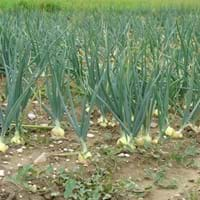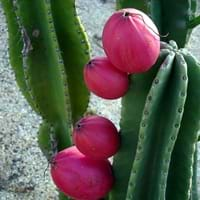Life Span
Perennial
Annual
Type
Bulb or Corm or Tuber
Cactus
Origin
World/Pandemic, North America, Europe, Russia/Siberia, Northern Africa, Asia, India
South America, Argentina, Brazil
Types
Not Available
Not Available
Number of Varieties
Not Available
Habitat
Cropland, Farms, gardens
Desert
USDA Hardiness Zone
Not Available
11-15
AHS Heat Zone
Not Available
12-10
Sunset Zone
21,22
16, 17, 21, 22, 23, 24
Habit
Not Available
Upright/Erect
Flower Color
White, Yellow green
White, Yellow
Flower Color Modifier
Bicolor
Bicolor
Fruit Color
Not Available
Pink, Red
Leaf Color in Spring
Blue Green, Yellow green
Green
Leaf Color in Summer
Green, Gray Green
Green
Leaf Color in Fall
Green, Gray Green, Yellow green
Green
Leaf Color in Winter
Not Available
Green
Leaf Shape
Linear
Toothed
Plant Season
Spring, Summer
Spring, Summer, Fall, Winter
Sunlight
Full Sun, Partial Sun
Full Sun
Growth Rate
Medium
Medium
Type of Soil
Loam, Sand
Loam, Sand
The pH of Soil
Neutral
Acidic, Neutral, Alkaline
Soil Drainage
Well drained
Well drained
Bloom Time
Spring, Late Spring, Early Summer
Early Summer, Summer, Late Summer
Tolerances
Drought
Drought, Salt
Where to Plant?
Ground, Pot
Container, Ground
How to Plant?
Seedlings, Sets
Seedlings
Plant Maintenance
Medium
Medium
Watering Requirements
Keep the ground moist but not water-logged, Requires a lot of watering, Water twice a day in the initial period
Never Over-water
In Summer
Lots of watering
Lots of watering
In Spring
Moderate
Moderate
In Winter
Average Water
Average Water
Soil pH
Not Available
Acidic, Neutral, Alkaline
Soil Type
Not Available
Loam, Sand
Soil Drainage Capacity
Well drained
Well drained
Sun Exposure
Full Sun, Partial Sun
Full Sun
Pruning
Remove damaged leaves, Remove dead branches, Remove dead leaves
Remove damaged leaves, Remove dead branches, Remove dead leaves
Fertilizers
All-Purpose Liquid Fertilizer
All-Purpose Liquid Fertilizer
Pests and Diseases
Red blotch
Red blotch
Plant Tolerance
Drought
Drought
Flower Petal Number
Single
Double
Showy Fruit
Not Available
Yes
Edible Fruit
Not Available
Yes
Fragrant Bark/Stem
Yes
No
Foliage Texture
Medium
Bold
Foliage Sheen
Matte
Matte
Attracts
Not Available
Birds, Hummingbirds, Butterflies
Allergy
Not Available
Not Available
Aesthetic Uses
Not Used For Aesthetic Purpose
Showy Purposes
Beauty Benefits
Not Available
Not Available
Environmental Uses
Air purification
Air purification
Medicinal Uses
Asthma, Bronchitis, cholesterol-lowering, Cough, Diabetes, Digestion problems, Diuretic, High blood pressure
Antioxidants, Indigestion, Oedema, Wounds
Part of Plant Used
Whole plant
Fruits
Other Uses
Culinary use
Showy Purposes
Used As Indoor Plant
Yes
Yes
Used As Outdoor Plant
Yes
Yes
Garden Design
Not Available
Container, Fruit, Fruit Tree, Hedges, Houseplant, Rock Garden, Wall, Tropical
Botanical Name
ALLIUM cepa 'Vidalia'
CEREUS hildmannianus ssp. uruguayanus
Common Name
Garden Onion, Sweet Onion, Vidalia Onion
Peruvian Apple Cactus
In Hindi
मीठा प्याज
Peruvian Apple cactus
In German
Sweet Onion
Peruanische Apple-Kaktus
In French
oignon doux
Péruvienne d'Apple Cactus
In Spanish
Cebolla dulce
Peruana de Apple Cactus
In Greek
γλυκό Κρεμμύδι
Του Περού μήλο κάκτος
In Portuguese
Cebola doce
Cactus a Apple peruana
In Polish
słodka Cebula
Peruwiański Jabłko Cactus
In Latin
Dulcis cepa
Apple Peruviani Cactus
Phylum
Tracheophyta
Magnoliophyta
Class
Magnoliopsida
Magnoliopsida
Order
Asparagales
Caryophyllidae
Family
Liliaceae
Cactaceae
Clade
Angiosperms, Asparagales, Monocots
Angiosperms, Core eudicots, Eudicots
Tribe
Not Available
Cereeae
Subfamily
Not Available
Cactoideae
Number of Species
Not Available
Properties of Sweet Onion and Peruvian Apple Cactus
Wondering what are the properties of Sweet Onion and Peruvian Apple Cactus? We provide you with everything About Sweet Onion and Peruvian Apple Cactus. Sweet Onion doesn't have thorns and Peruvian Apple Cactus doesn't have thorns. Also Sweet Onion does not have fragrant flowers. Sweet Onion has allergic reactions like Not Available and Peruvian Apple Cactus has allergic reactions like Not Available. Compare all the properties and characteristics of these two plants. Find out which of these plant can be used as indoor plant. If you are interested to decorate your house and garden, find out aesthetic uses, compare them and select the plant which will beautify your surrounding. Along with beautification, try comparing medicinal and edible uses of Sweet Onion and Peruvian Apple Cactus and you can choose the plant having best and most benefits.
Season and Care of Sweet Onion and Peruvian Apple Cactus
Season and care of Sweet Onion and Peruvian Apple Cactus is important to know. While considering everything about Sweet Onion and Peruvian Apple Cactus Care, growing season is an essential factor. Sweet Onion season is Spring and Summer and Peruvian Apple Cactus season is Spring and Summer. The type of soil for Sweet Onion is Loam, Sand and for Peruvian Apple Cactus is Loam, Sand while the PH of soil for Sweet Onion is Neutral and for Peruvian Apple Cactus is Acidic, Neutral, Alkaline.
Sweet Onion and Peruvian Apple Cactus Physical Information
Sweet Onion and Peruvian Apple Cactus physical information is very important for comparison. Sweet Onion height is 60.00 cm and width 10.00 cm whereas Peruvian Apple Cactus height is 300.00 cm and width 90.00 cm. The color specification of Sweet Onion and Peruvian Apple Cactus are as follows:
Sweet Onion flower color: White and Yellow green
Sweet Onion leaf color: Blue Green and Yellow green
Peruvian Apple Cactus flower color: White and Yellow
- Peruvian Apple Cactus leaf color: Green
Care of Sweet Onion and Peruvian Apple Cactus
Care of Sweet Onion and Peruvian Apple Cactus include pruning, fertilizers, watering etc. Sweet Onion pruning is done Remove damaged leaves, Remove dead branches and Remove dead leaves and Peruvian Apple Cactus pruning is done Remove damaged leaves, Remove dead branches and Remove dead leaves. In summer Sweet Onion needs Lots of watering and in winter, it needs Average Water. Whereas, in summer Peruvian Apple Cactus needs Lots of watering and in winter, it needs Average Water.





